In the quest to build the best DIY garage I could, I spent weeks researching and stressing over what I was going to do about my garage floor. My Short Shift garage is located in Minnesota and the floor is insulated, but unheated. I franticly scoured the internet searching for the best coating I could for my needs. The problem I kept running in to was no one else had my exact needs. This is the most important thing I would like to leave my reader with: No one can tell you exactly what you need. There will be compromises and there are pros and cons to each different flooring strategy. In the end I picked what was best for me, my budget, and my goals.
What were my options?
Epoxy
After my initial searching, the options were epoxy coating, polyaspartic coating, or a modular floor (SwissTrax). My parents’ garage was my first experience with epoxy. I like the looks, it was easy enough to keep clean, but would not protect un-shoed feet from the harshness of South Dakota’s winters. I remember several instances of wet socks from walking on what appeared to be a dry floor, only to find out it was covered in snow melt. We all know there is nothing worse than wet socks.
I also remember the frequency with which we had to clean our garage floor. It felt as though every nicer weekend in spring was spent sweeping. Sweeping the majority of the floor was no issue. However, in several spots the floor coating included a sand like material to improve traction. Cleaning these spots was notoriously difficult because the broom would not slide across the floor. Then once or twice a year we broke out the pressure washer to clean the snow melt, salt particles, and sand, which required pulling every single thing out of the garage. It was a rewarding process, as the garage at least looked new afterward.
Polyaspartic
Polyaspartic coating is essentially a tougher, but more flexible epoxy coating. It is much less DIY friendly, and my garage was all about DIY. Here is a great infographic of Polyaspartic vs Epoxy from FlooringInc.com.
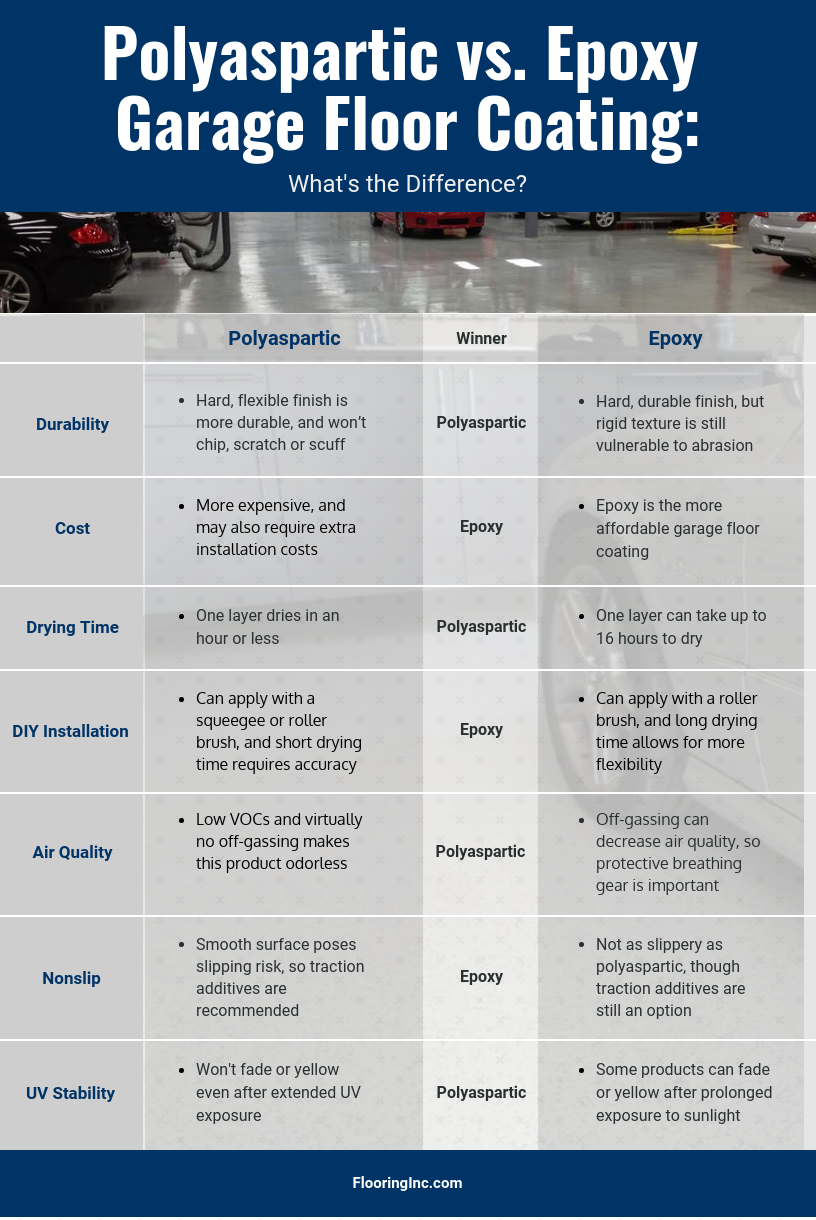
SwissTrax
Not many mechanical enthusiasts feel that SwissTrax is the right choice for them. It looks fantastic, but is typically found in collector garages. I approached SwissTrax with the same thought process, “Really cool, but not for me”. Then I met Sumeet Gadhoke in Minnesota. He is an entrepreneur and SwissTrax dealer. I made a post in the Facebook group “Obsessed Garage” looking for advice on garage floor coatings, and Sumeet invited me to his house to show me SwissTrax first hand.
Driving to Sumeet’s house with extreme skepticism, my bias was that SwissTrax was not going to work for me. There are a lot of nay-sayers that harp on the practicality of SwissTrax with no experience and just their intuition. I wanted to see it before I dismissed it. My first impression of SwissTrax is likely the same as everyone else’s. It looks really cool! It doesn’t take long to think of some reasons it might not be very practical. Sumeet was happy to show me that that is not the case.
Sumeet walked me through the elevator speech about how great the product is, how it cleans up very nicely, and how he is able to enjoy his garage with his children and dog and no one has to worry about wet feet. This is where my attention started to turn. I am building a garage to enjoy with my wife and dogs, and the thought of them not getting wet from snow melt attracted me. Again, wet socks are the worst!
How does SwissTrax work?
SwissTrax is an injection molded polypropylene. It is an interlocking tile that is completely modular and customizable to your needs. There are 18 available colors and you can even add your logo. It has a patented drainage system that allows water to flow freely underneath. This drainage system also allows dirt to settle resulting in a floor that always looks clean. I immediately questioned how often do you have to clean the floor underneath, if it is always collecting dust. Sumeet mentioned that he rarely vacuums. I asked him to pull up a few tiles and show me what that looks like.
Underneath a heavy traffic area, there was noticeable dust and dirt accumulation. The floor looked like it genuinely had not been cleaned in a year or two. This was visible or detectable from walking on or looking at the floor when we walked in. Sumeet mentioned how easily the vacuum could pull this dirt through the floor and I put him on the spot, “Ok show me!”. Sumeet obliged and it was just like vacuuming any other floor. Underneath was dust free and I was sold.
My Installation Experience
I installed SwissTrax in October 2020, just before the first big snowfall. Excited to see how they would perform in a Minnesota Winter, I was anxious to get them installed in time. I also wanted to wait to write this review until a full season had passed to give it the most extensive review I could. In short, I love the SwissTrax.
Installation was incredibly simple. It required very little fussing and only simple measurements. The SwissTrax design tool ensured I had enough tiles and Sumeet rented me a tool to assist in cutting. I have a two post lift with the hydraulic cables running on the floor. This requires a steel cover to be over top of the cables. Having the 3/4 of an inch boost from the SwissTrax actually helps my very low Mazda RX-7 navigate this cover without scraping. The lift is also at an angle, and cutting the SwissTrax on an angle was incredibly easy.
Winter Use
Over the winter, my wife worked out in the garage while I wrenched on the RX-7. We hung out with our dogs, our friends, and our friends’ dogs. Not once did someone have a wet sock or wet fur. Not once did I sweep the snow melt or dried salt out. Several times I parked our VW Jetta inside after a fresh snowfall and we immediately hung out and watched TV without a concern of the actively melting snow dampening our fun.
I also wrenched on a lot of cars on top of the SwissTrax. I used a jack, jackstands, and rolled various things around my garage. I have everything on casters to ensure that nothing will ever be in the way (minus the lift). It was very easy to slide things across. I purchased a Ford rear differential and steel subframe for the Mazda (Long story for another day). It came in a 200lb plywood crate. I was able to slide it across the floor with ease because of the awesome SwissTrax design that reduces friction.
Minor Oopsies
I did have an unfortunate event of spilling about 2 quarts of oil onto my floor. But due to the ease of removability, I was able to quickly pull up a large sheet of SwissTrax, bring it outside to hose it off, and then dry my floor off. I brought the Swisstrax back inside and snapped it back in place. The whole thing took five minutes.
Anyone who’s worked on cars has dropped a small washer or two. I dropped plenty over the course of the winter. They had a nasty habit of falling through the SwissTrax grates. However, I was able to lift up one corner and look under a large portion to easily spot the silver on the floor. It did take more time and effort to recover than a normal floor, but that is a minor price to pay for dry socks.
Final Thoughts
Overall, I am ecstatic about my SwissTrax flooring. I would recommend them to anyone and everyone looking to upgrade their garage. My 756sqft ended up around $3,000. This is not inexpensive, but the cost of having a professional epoxy was comparable, and the longevity and advantages of SwissTrax outweighed the extra $2,000 compared to DIY epoxy coating that there was no guarantee of applying right the first time. If you’re on the edge of deciding, I say take that next step!

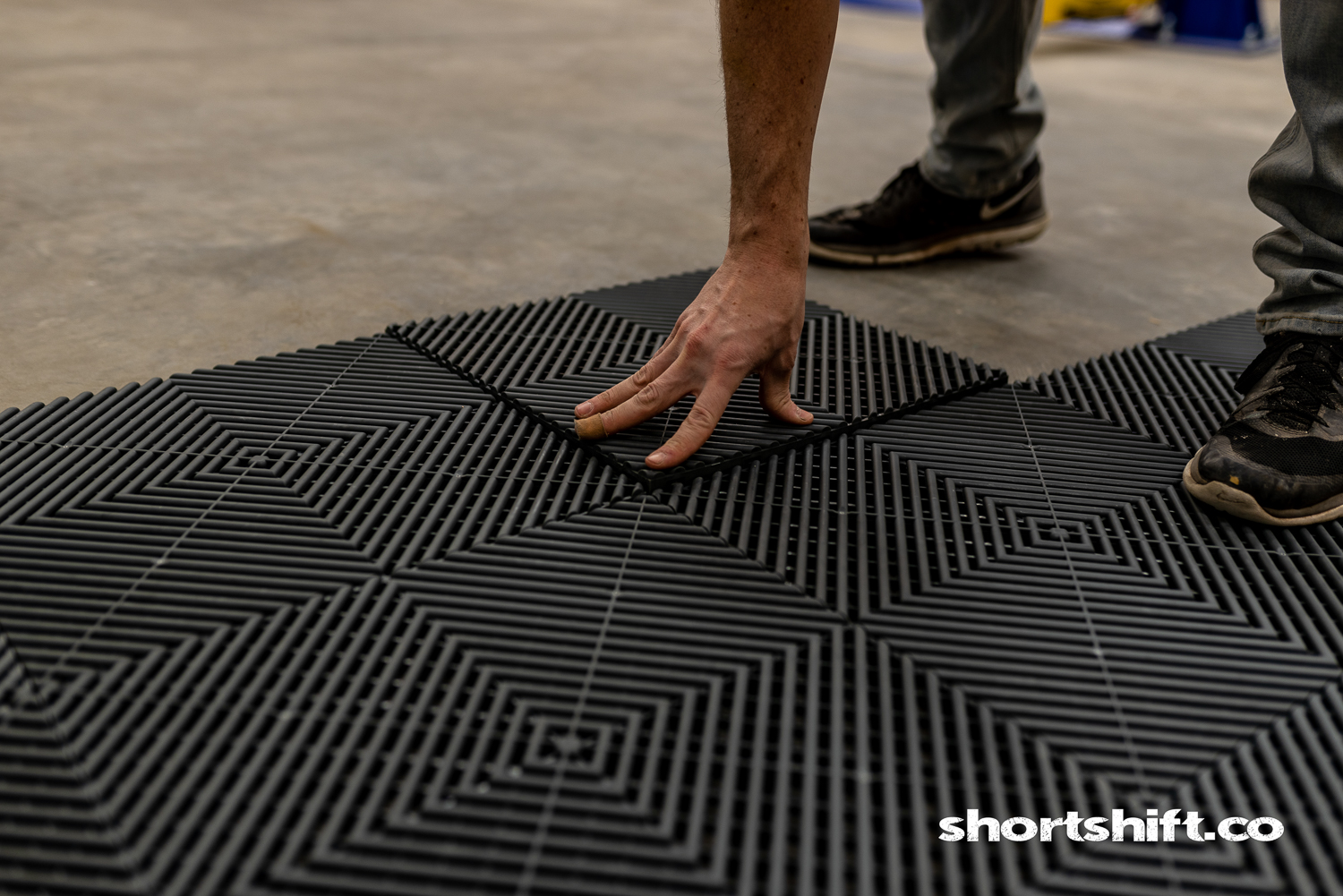

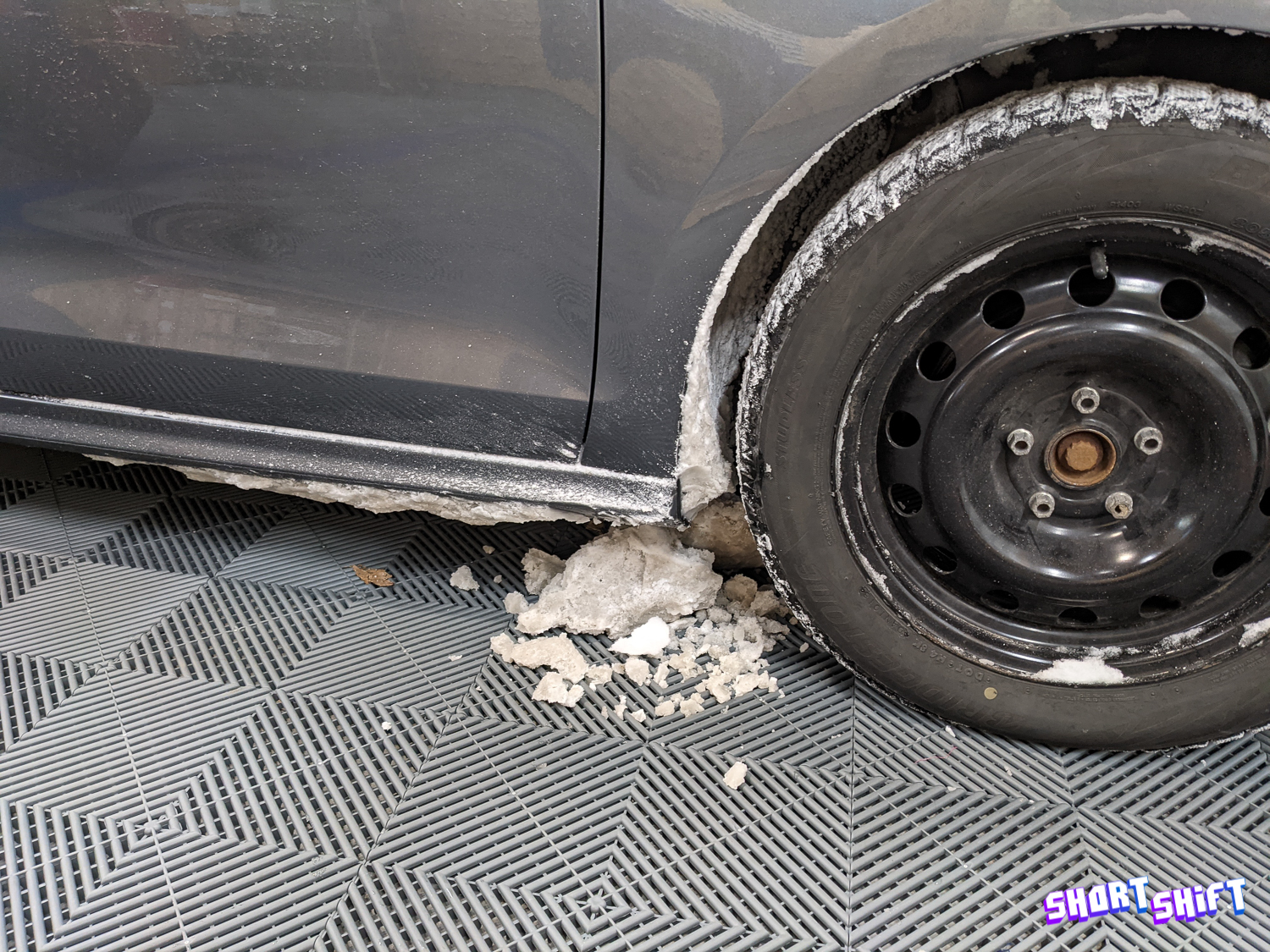
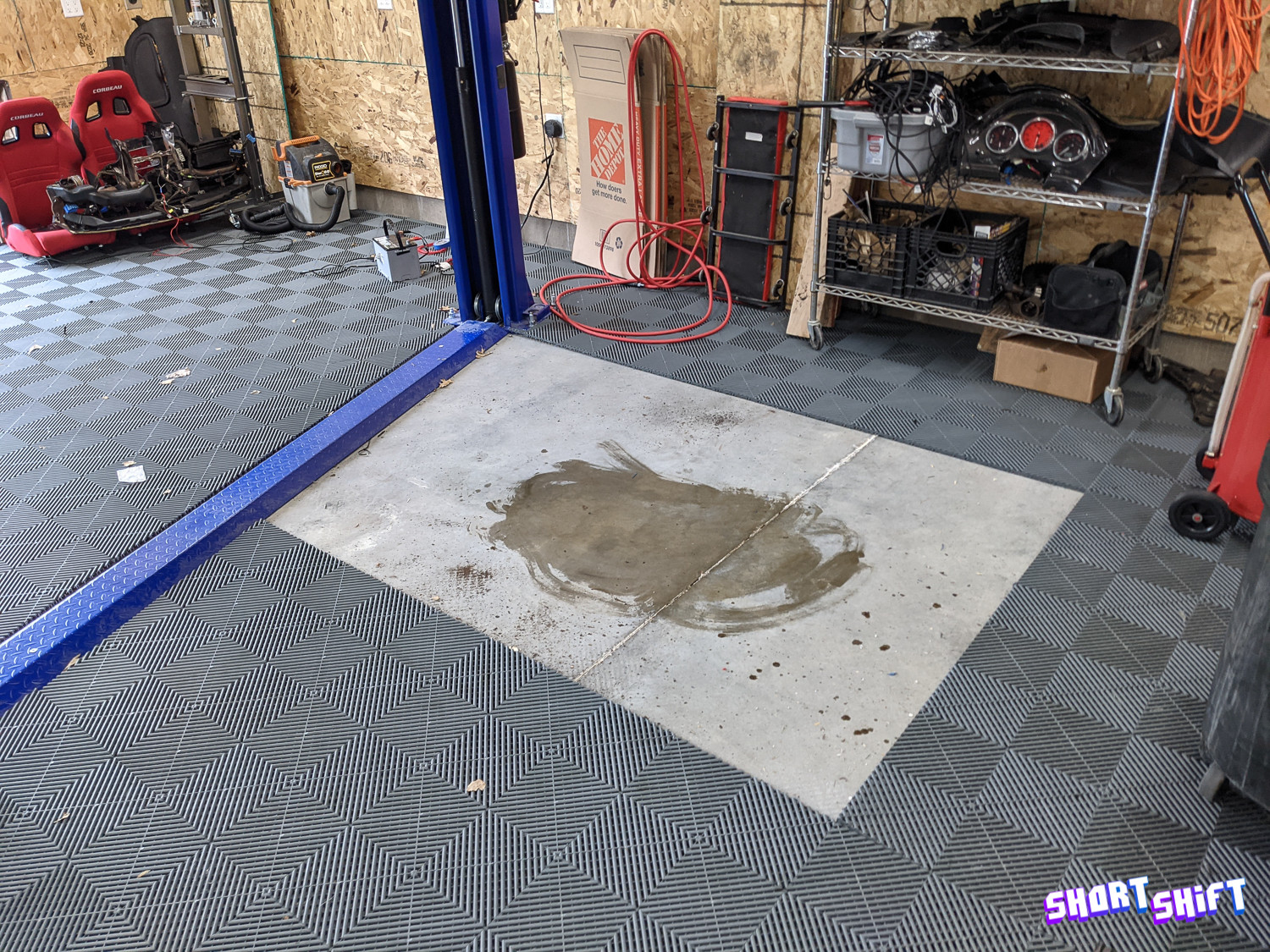
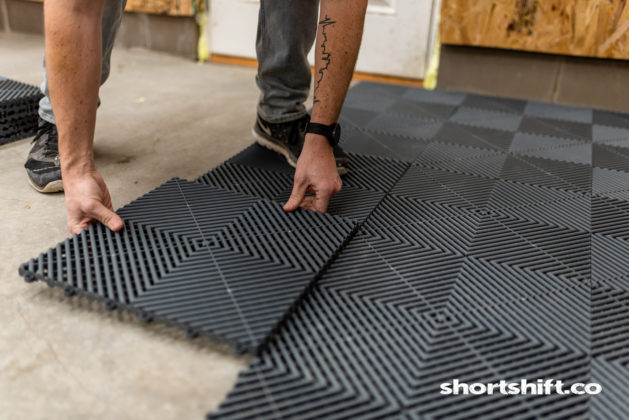
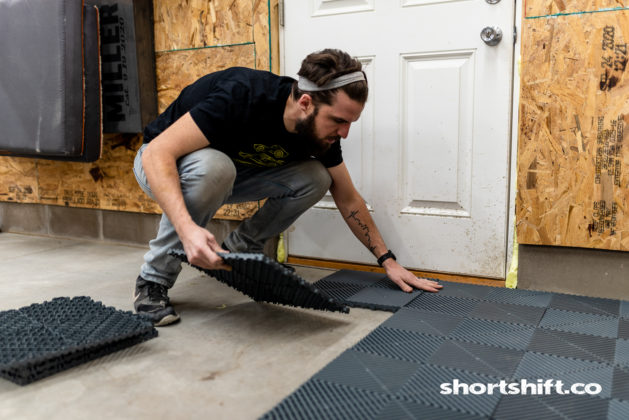
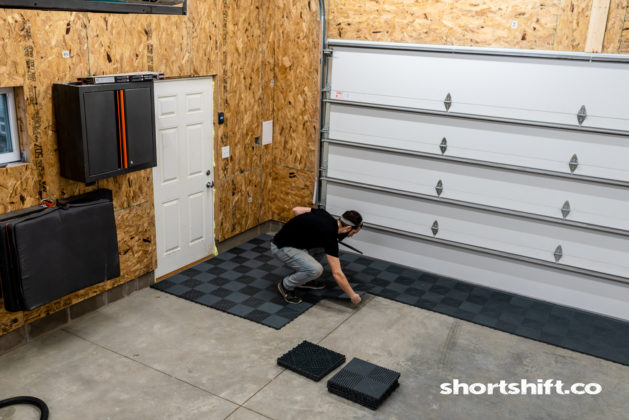
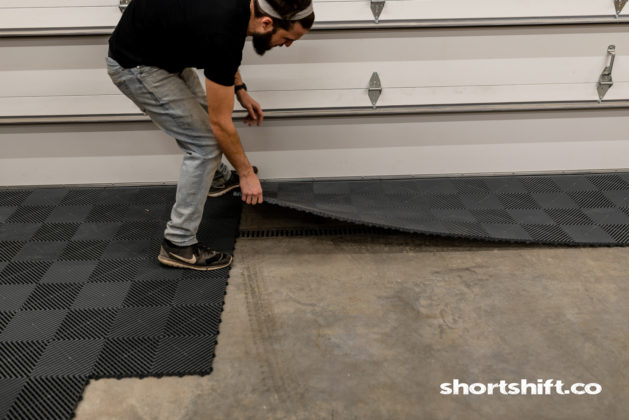
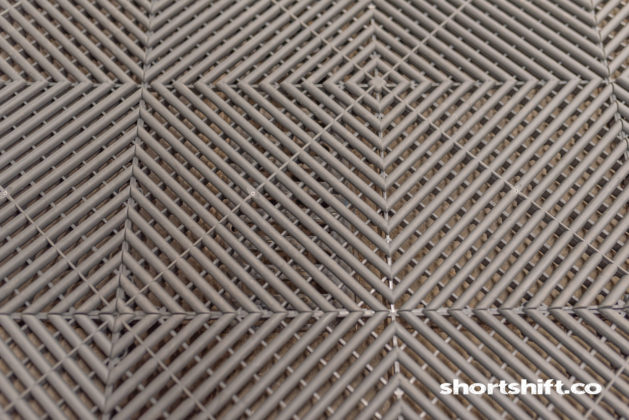
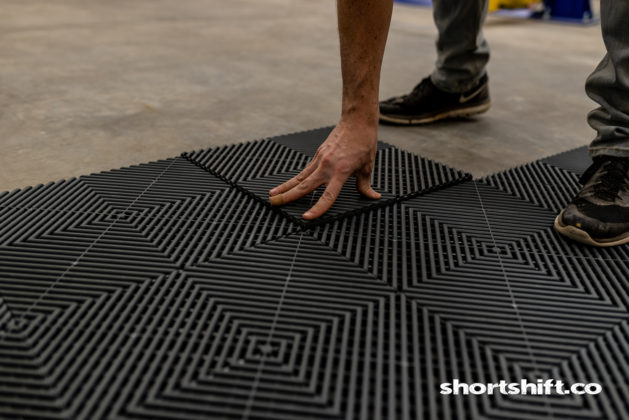
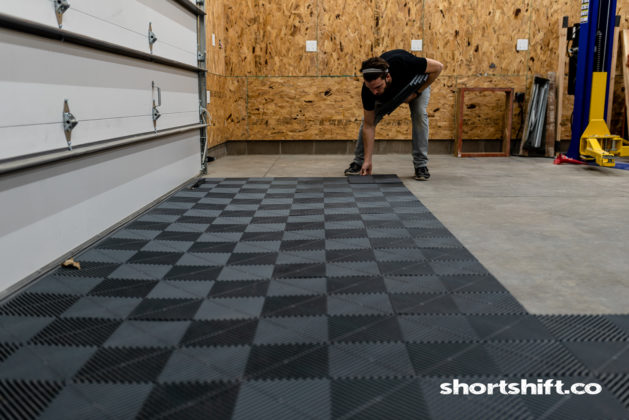
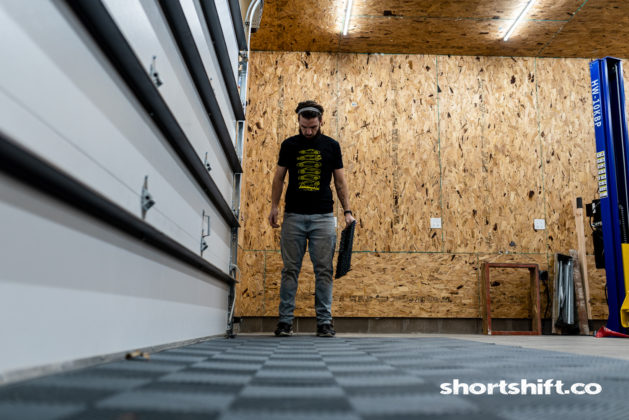
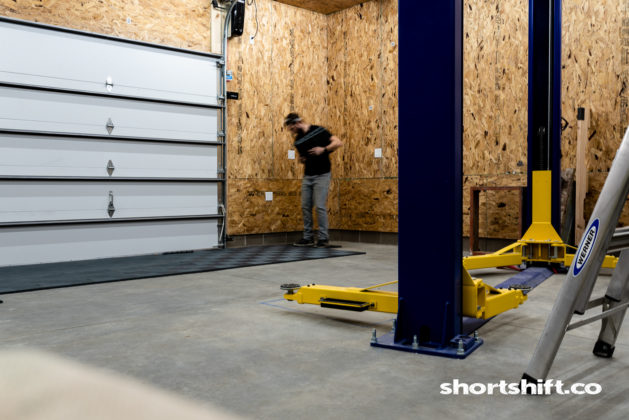
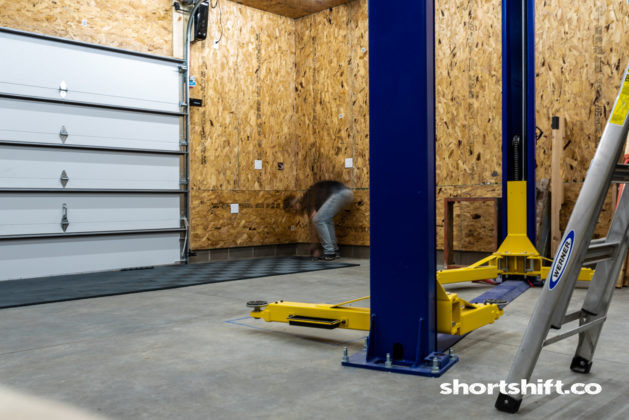
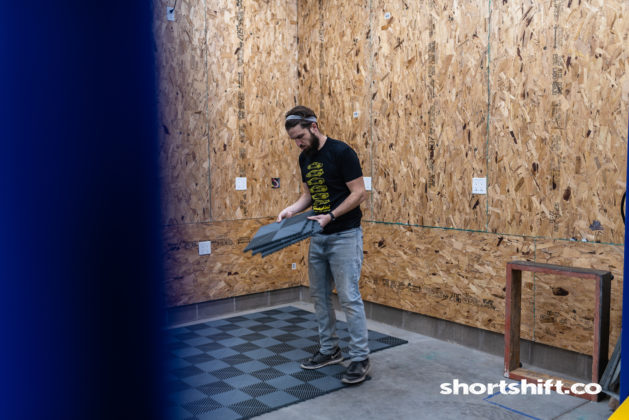
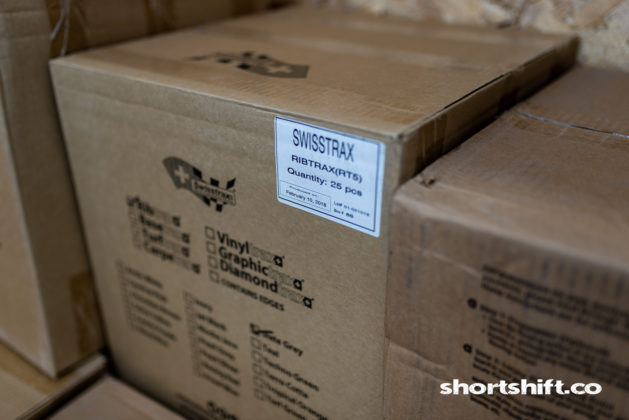
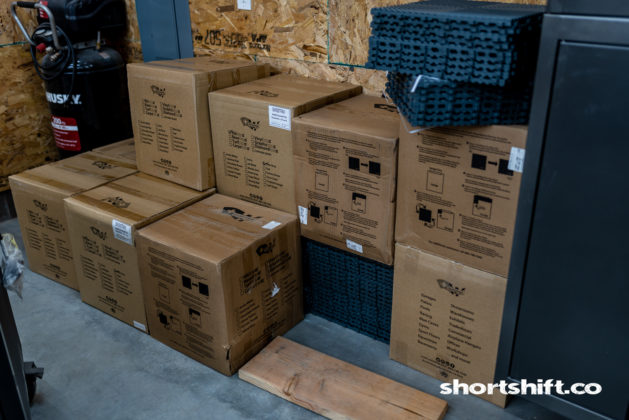
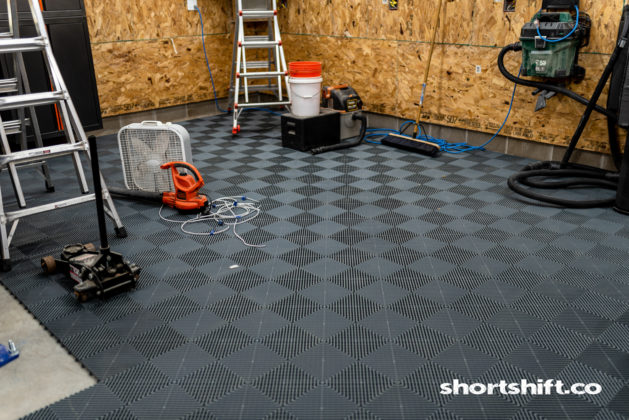
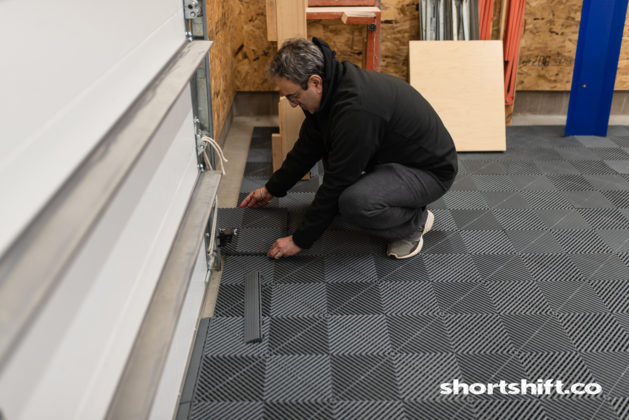
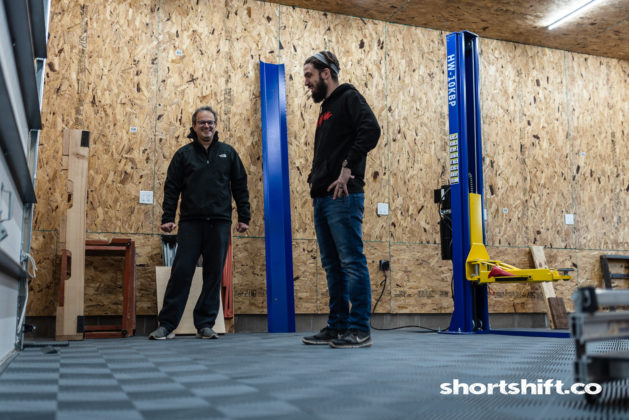
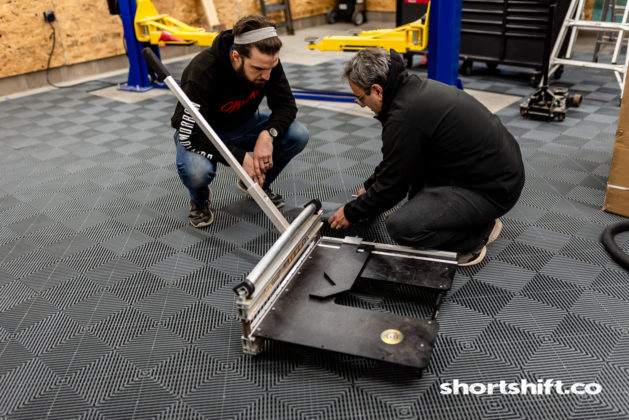
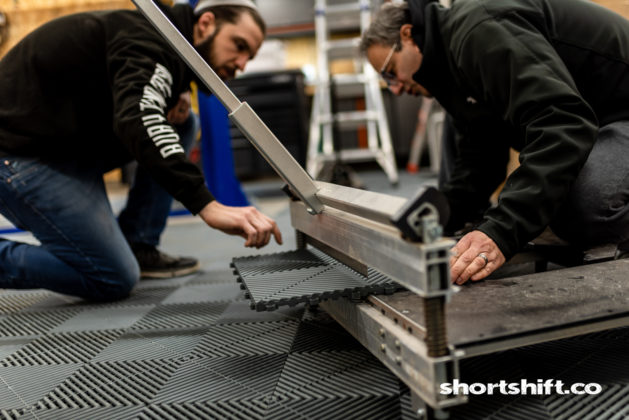
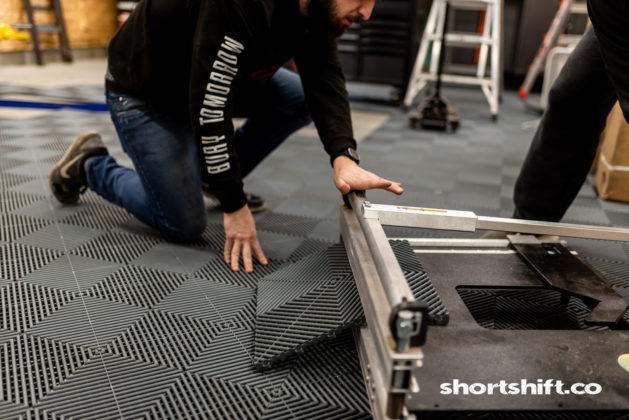
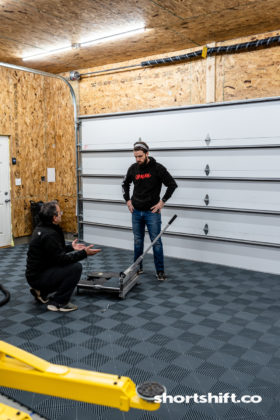
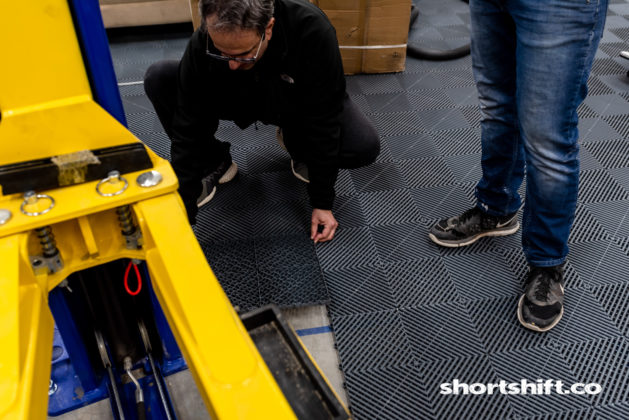
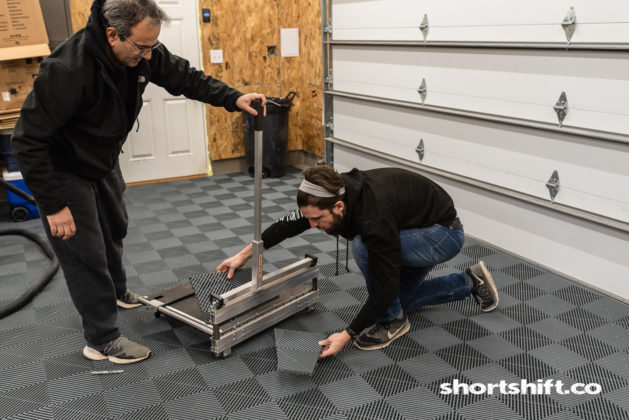
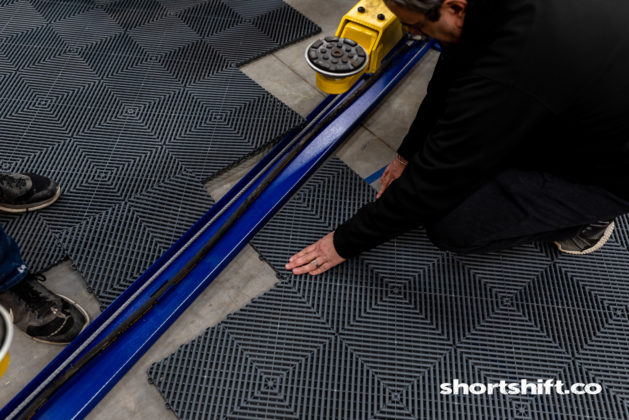
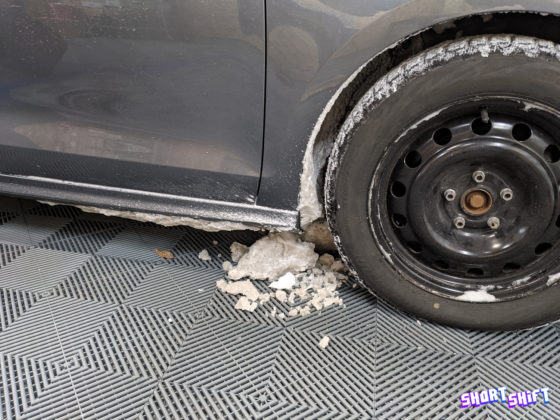
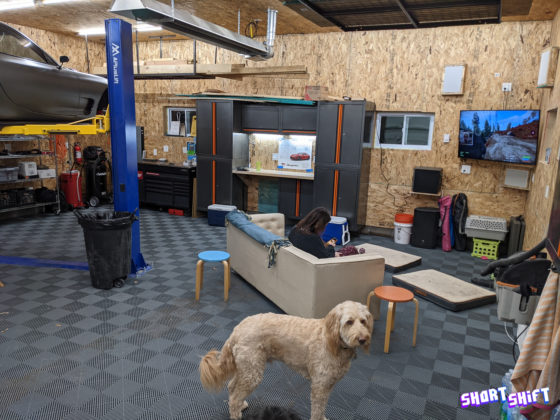
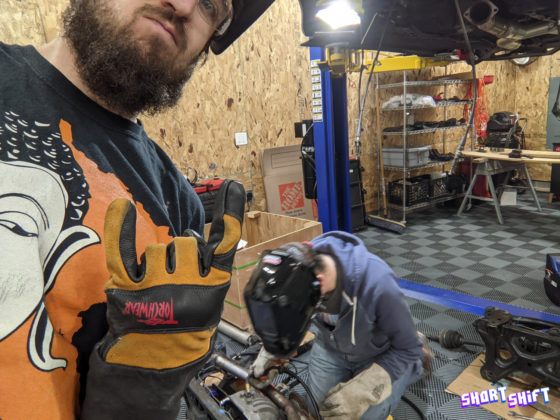
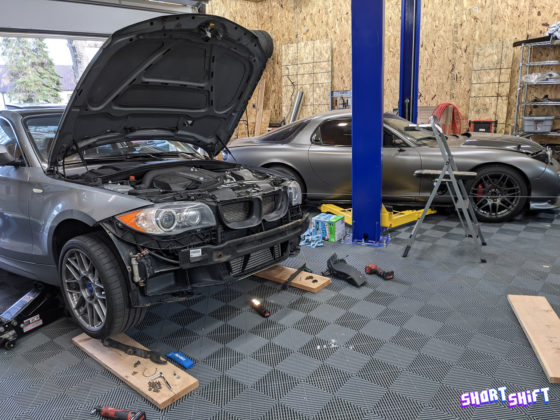
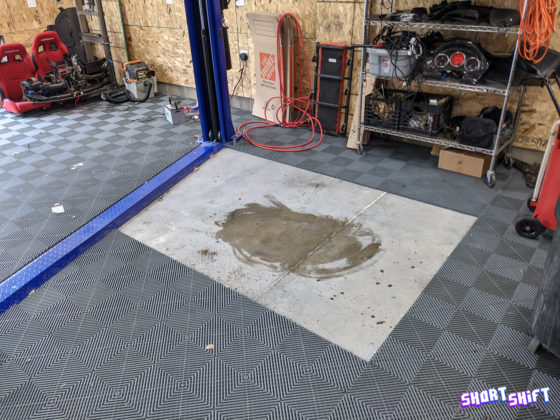
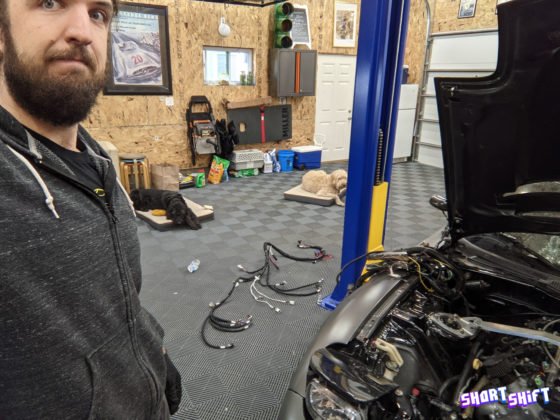
Thanks for this flooring post. There are tons of posts and opinions about garage flooring, but this was one of the most informative and unbiased that I’ve found. I had not run across Polyaspartic until here.
Glad you enjoyed it, Dennis!